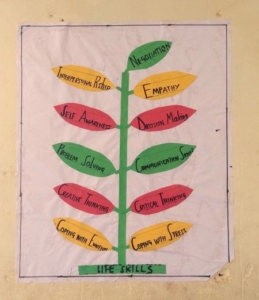Promoting Safe Sex Among Adolescents
Policy Issue
- Sub-Saharan African countries experience the highest rates of teenage pregnancy, early marriage, HIV, and other sexually transmitted infections in the world.
- In Tanzania, approximately 60 percent of females say they have had sex by age 18. Yet less than 10 percent of adolescents aged 15 to 19 report using any modern contraceptive method.
- Because programs to improve supply (e.g. access to contraceptives) and programs to increase demand (e.g. education on the importance of contraceptive use) are typically bundled together, it is difficult to discern which types of interventions are most effective in improving sexual and reproductive health outcomes.
- The majority of existing programs tend to target only females, while descriptive data suggest that males may have more control over decisions around contraceptive use.
Implementing Partner
BRAC, an international development organization dedicated to alleviating global poverty, launched the Empowerment and Livelihood for Adolescents (ELA) program in 2008. The program provides a safe space, skills training, and microfinance to increase the social and financial empowerment of girls and young women aged 12 to 24. ELA clubs now operate in Bangladesh and across sub-Saharan Africa, including nearly 150 clubs in Tanzania.
Intervention
- Females:
- Adolescent girls are offered sexual and reproductive health (SRH) education through the ELA clubs in Tanzania, to assess the effectiveness of demand-side issues.
- Every two months, the girls are offered free contraceptives from Marie Stopes Tanzania, to assess how supply-side constraints affect low contraceptive rates.
- A subsample of females was asked to set three specific strategies to remain HIV/STI-free. This goal-setting exercise will allow researchers to investigate the impact of commitment to sexual and reproductive health on SRH outcomes.
- Males:
- Males from the sexual networks of females receive education around SRH and domestic violence issues through soccer clubs sponsored by Grassroots Soccer.
- By adding male peers to the intervention, researchers will be able to test whether improving males’ knowledge of SRH results in larger improvements in female outcomes.
Assessment
To assess the effectiveness of the SRH programming, researchers will collect data on the adolescents’ SRH behavior, including reported sexual activity, pregnancies, and knowledge of contraception methods. In addition, they will gather data on other health behaviors, including drinking, smoking, socializing, and self-reported mental and physical health. Outside of health, researchers will analyze adolescents’ economic behaviors, including savings and employment status, along with other behavioral indicators, including risk-taking and optimism. Finally, researchers will map adolescents’ social networks to better understand how adolescents’ peers may influence their decisions.




 Caption
Caption